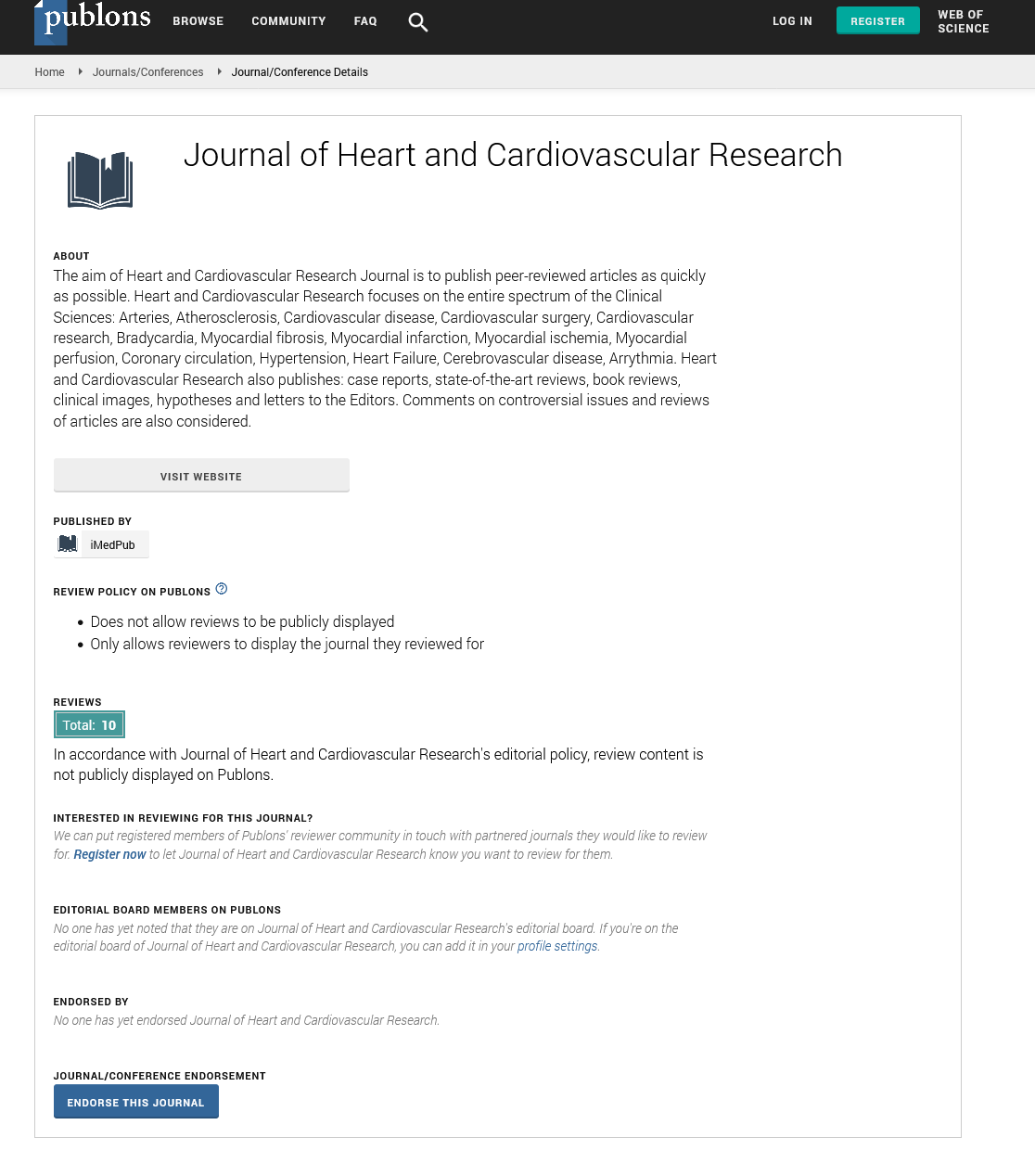ISSN : ISSN: 2576-1455
Journal of Heart and Cardiovascular Research
Forearm approach - changing mindset
22nd International Conference on New Horizons in Cardiology & Cardiologists Education
March 07-08, 2019 Berlin, Germany
Bruno L R Faillace, Adriano O Tamazato, Leonardo S Coelho, Evandro K P Ribeiro, Alexandre R Sposito, Fabio Conejo, Roger R Godinho and Rodrigo B Esper
Sancta Maggiore Hospital, Brazil
ScientificTracks Abstracts: J Heart Cardiovasc Res
DOI: 10.21767/2576-1455-C1-002
Abstract
Statement: Radial access offers several benefits to patients, including reducing mortality in some settings. To ensure this, the interventional cardiologist must want to use that access path. To increase this technique use, the physician first needs to change the mindset. Although slightly more technically difficult and less supportive than femoral access, it proved to be safer and feasible.
Methodology & Theoretical Orientation: Several studies, including RIVAL trial, have shown the superiority of radial access in percutaneous coronary interventions. With this information, after a meeting of the hospital interventional cardiology team, it was decided to increase the use preference of the forearm vessels (radial and ulnar arteries of both arms) in all patients. In cases of puncture site changing (cross over), the physicians would opt for the other arm instead of femoral access. In individuals with previous surgical revascularization (CABG), the procedure would be performed by the left arm due to the presence of left internal mammary artery. The data of all patients are stored in a database.
Findings: After changing the mindset, there was an expressive increase in cases of forearm access. The service average, which was already high, went from 80% to 89%, reaching a rate of 96% in April 2018. The most used access was the right radial and the cross over rate was very low (3%). Using the forearm access, it is possible to reduce the length of hospital stay after a coronarography and to increase the rate of the same day discharge after a percutaneous coronary intervention. Thus, the concept of the radial lounge was implemented, which provides a greater hospital stay.
Conclusion & Significance: After a simple attitude of changing the interventional cardiology team mindset, the safer forearm vascular access can be offered to the patients more frequently.
Recent Publications
1. Faillace B L R, Ribeiro H B, Campos C M, Truffa A A M, Bernardi F L, Oliveira M D P, Mariani J Jr., Marchini J F, Tarasoutchi F and Lemos P A (2017) Potential of transcatheter aortic valve replacement to improve post-procedure renal function. Cardiovasc Revasc Med. 18(7):507- 511.
2. Bruno L R Faillace, Micheli Z Galon, Marcos Danillo P Oliveira, Guy F A Prado Jr., Adriano A M Truffa, Expedito E Ribeiro and Pedro A Lemos (2015) Left main compression by a giant aneurysm of the left sinus of valsalva: an extremely rare reason for myocardial infarction and cardiogenic shock. Case Rep Cardiol. 2015:703646. doi: 10.1155/2015/703646.
3. Marcos Danillo Peixoto Oliveira, Expedito E Ribeiro, Carlos M Campos, Henrique B Ribeiro, Bruno L R Faillace, Augusto C Lopes, Rodrigo B Esper, George X Meirelles, Marco A Perin, Alexandre Abizaid and Pedro A Lemos (2015) Four-year clinical follow-up of the first-in-man randomized comparison of a novel sirolimus eluting stent with abluminal biodegradable polymer and ultra-thin strut cobalt-chromium alloy: the INSPIRON-I trial. Cardiovasc Diagn Ther. 5(4):264-70.
4. Biselli B, Ulhoa M B, Faillace B L R, Pinton F A, Escalante J P, Bacal F, Issa V S, Ayub Ferreira S M, Lemos Neto P A and Bocchi E A (2013) Cardiogenic shock after traumatic coronary hematoma. European Journal of Heart Failure 1:S331-S331.
Biography
Bruno L R Faillace has his expertise in Interventional Cardiology. He is a Brazilian Physician who has completed his training in Clinical and Interventional Cardiology at the Heart Institute of São Paulo, Brazil. Since college, his research line has always been in the cardiology area. Currently, he works at Sancta Maggiore Hospital in São Paulo and has been emerging among the new generation of interventional cardiologists at the national setting.
E-mail: brunolrfaillace@gmail.com
Google Scholar citation report
Citations : 34
Journal of Heart and Cardiovascular Research received 34 citations as per Google Scholar report
Journal of Heart and Cardiovascular Research peer review process verified at publons
Abstracted/Indexed in
- Google Scholar
- Sherpa Romeo
- China National Knowledge Infrastructure (CNKI)
- Publons
Open Access Journals
- Aquaculture & Veterinary Science
- Chemistry & Chemical Sciences
- Clinical Sciences
- Engineering
- General Science
- Genetics & Molecular Biology
- Health Care & Nursing
- Immunology & Microbiology
- Materials Science
- Mathematics & Physics
- Medical Sciences
- Neurology & Psychiatry
- Oncology & Cancer Science
- Pharmaceutical Sciences
